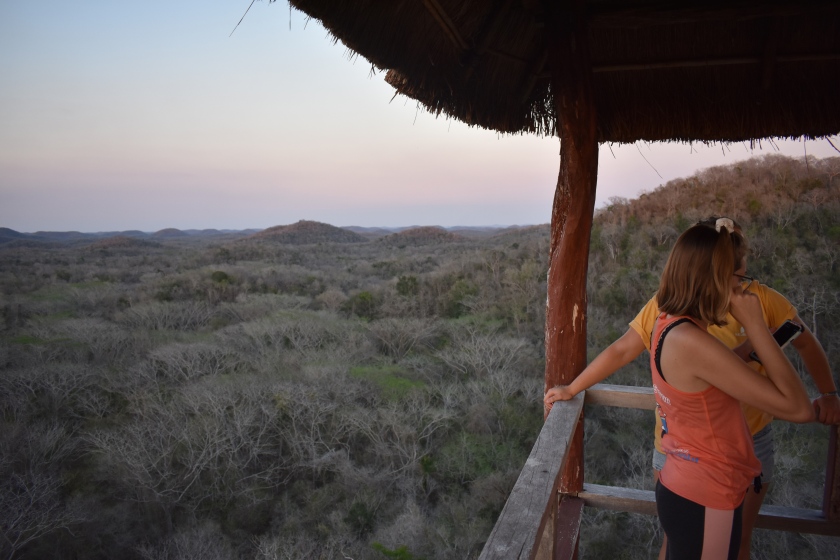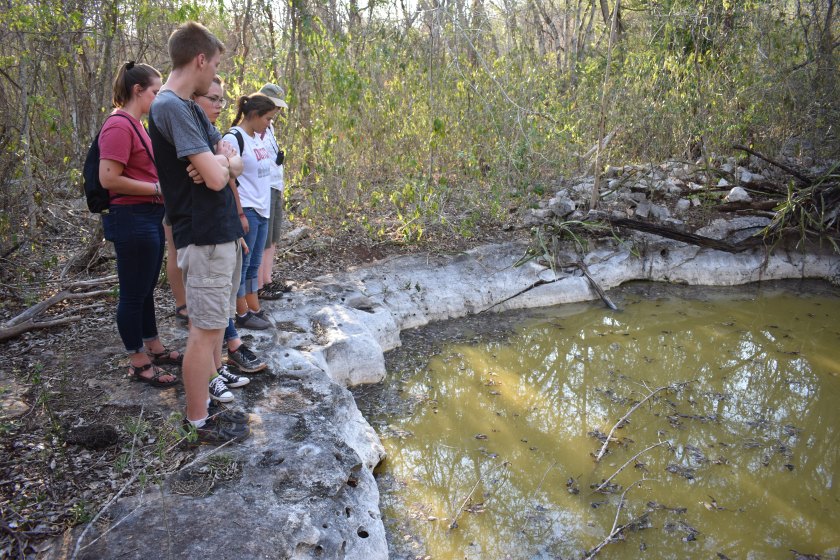 Greetings from Mexico!
Greetings from Mexico!
This is the first of several entries about my time in the Yucatan Peninsula, where I’ve been working as the visiting faculty member for my institution’s study-abroad program. I’m teaching classes on climate change and introductory environmental science, and of course I’m visiting wetlands when I can.

Map by Kaldari [CC0], at https://commons.wikimedia.org
The Peninsula sticks up into the Gulf of Mexico (separates it from the rest of the Atlantic Ocean), and is almost exactly due south of Iowa. The land is karst: most of it is a very flat, limestone shelf. Supposedly early Spanish visitors referred to it as “a land without soil or water,’ because of the thin soil and exposed bedrock; that karst is very porous, so no lakes or streams/rivers exist, either. Much of the region is scrub-shrub (very open, dry habitat) punctuated with sinkholes/caves (some filled with water).
The southern part of the Peninsula rises into the Puuc Hills, and is more lush and forested. Our Program participants visited the Millsaps College Biocultural Reserve known by its Mayan name, Kaxil Kiuic. What a wonderful place, and doing really interesting and important work on archaeology, rural development, and conservation.
 AND THEY HAVE A WETLAND! Because of the geology, not many wetlands exist on the Peninsula (except of course along the coast—watch for more about that in future posts). This wetland was made by the staff here, and for a purpose: this is a working wetland. Specifically, this system “treats” (cleans) wastewater. It’s especially important to use care with wastewater here—in this karst landscape, any polluted water will quickly find its way down into the groundwater, and the pollution will flow through it.
AND THEY HAVE A WETLAND! Because of the geology, not many wetlands exist on the Peninsula (except of course along the coast—watch for more about that in future posts). This wetland was made by the staff here, and for a purpose: this is a working wetland. Specifically, this system “treats” (cleans) wastewater. It’s especially important to use care with wastewater here—in this karst landscape, any polluted water will quickly find its way down into the groundwater, and the pollution will flow through it.
And any surface water is precious to wildlife. Lacking ponds or streams, any little puddle is effectively a “watering hole” and valuable to the animals here. We visited such a water feature, and were delighted in all the birds we observed during our short daytime visit.
Of course, this is the land of the Jaguar, and yes, they can be found here. You are most unlikely to see one of these cats, but tracks and scat tell the story—but now, camera traps can “catch” El Tigre as well. And a watering hole is just the place to do it.
 I hope to visit this place again, and take a closer look at this little wetland. There’s much else to see at Kaxil Kiuic, too…and some wonderful people. In the meantime, watch for future posts of my wanderings in the Yucatan. Thanks for stopping by!!
I hope to visit this place again, and take a closer look at this little wetland. There’s much else to see at Kaxil Kiuic, too…and some wonderful people. In the meantime, watch for future posts of my wanderings in the Yucatan. Thanks for stopping by!!



One thought on ““Land Without Soil Or Water””